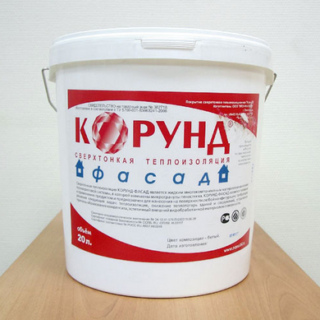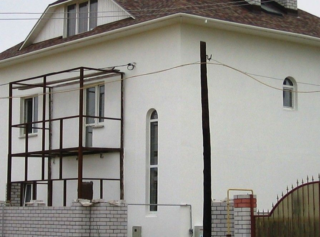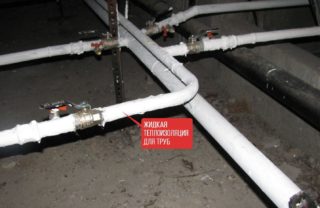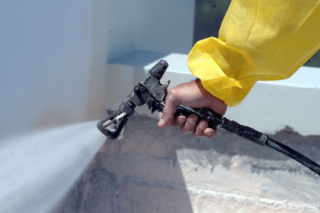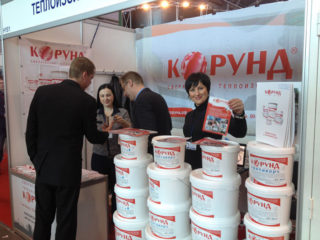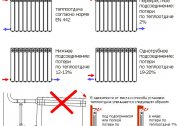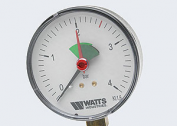When constructing residential buildings, much attention is paid to high-quality thermal insulation. It allows you to maintain a comfortable temperature in the house at any time of the year, and also eliminates draft, mold, fungus. Thanks to warming, the owner of the house will be able to save money on heating. You can make thermal insulation using different materials, a wide range of which can be found in construction stores. Corundum belongs to such heat insulators. The insulation has its own technical characteristics, advantages and disadvantages.
Distinctive features
Externally, the material is similar to paint and applied in the same way, but its properties and tasks are different.
Liquid thermal insulation Corundum is made from a mixture of ceramic fillers and a solution on a water-acrylic basis. Ceramic particles act as a heater, and the solution allows you to distribute the insulation elements over the entire surface with a uniform layer. Such a composition can be quickly and conveniently applied to any area with a uniform layer. The composition contains various connecting additives that improve the characteristics of the heat insulator. The most popular are rubber and silicone.
Scope and characteristics
Thermal insulation with Corundum can be made on any surface. Thermal insulation paint adheres well to brick, plastic, metal, stone and other materials. The main areas of application include:
- Housing and communal services. It can be walls and facades of buildings, pipelines, windows, roofs, balconies.
- The transport industry.
- Heat power constructions.
- Building.
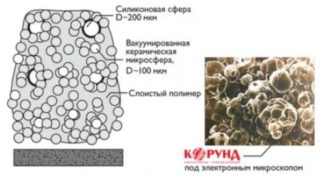 Characteristics of thermal insulation Corundum:
Characteristics of thermal insulation Corundum:
- The temperature range of the paint is from -65 ° C to + 260 ° C. Liquid thermal insulation can be used both in cold regions and with strong heating.
- Low thermal conductivity of 0.0012W / m ° C. A layer of 2 mm thickness is sufficient to retain heat.
- Bending elasticity is 1 mm.
- Moisture resistance. The material does not absorb liquid and is not destroyed by the action of water.
- Heat transfer 4 W / m ° С.
- Vapor permeability of 0.03 mg / mh Pa.
- Drying time is 24 hours. When applied to warm pipes, drying is faster.
According to the characteristics given, it can be judged that Corundum is one of the best heat-insulating materials.
Advantages and disadvantages
The main positive features of liquid thermal insulation Corundum:
- Universality. Suitable for working with any surfaces.
- Duration of operation. Retains its characteristics unchanged for 15 years. With proper care (cleaning and performing high-quality topcoat), the operating time increases by 2 times.
- Corrosion protection.
- Short drying time - 24 hours. If you paint with a hot pipeline, the surface will dry faster.
- Easy application. Heat paint is applied to the surface manually using a roller or special devices.
- Economic expense. The superthin layer warmly and efficiently insulates the room.
- Light weight. Paint can even be applied on fragile structures, without the need for an additional reinforcing frame.
- It is laid on the surface with a seamless layer. This additionally protects the room from the cold, which could get inside through the joints.
- Resistance to ultraviolet rays and aggressive environments.It is not exposed to the formation of mold, fungi, the influence of insects and rodents.
- Resistance to burning. Withstands temperatures up to 260 ° without changing the characteristics. Above 600 ° C decomposes into carbon and nitric oxide.
- High environmental friendliness. The material is completely harmless to humans. It can be used even in homes where people with allergies live.
- It can be used as a finishing coat.
- Paint has received all the necessary quality certificates in Russia.
The disadvantages include the high cost of a heat insulator. The material appeared on sale recently, so not all characteristics have received sufficient practical confirmation. Corundum must be applied quickly, since the layer quickly hardens.
Varieties of heat insulator
The producer of liquid thermal insulation Corund offers the following varieties:
- Classic. The material is used in roofing and facade works. Suitable for insulating the internal surfaces of a building. Differs in universality and a high degree of efficiency.
- Antikor. It is used as an anti-corrosion coating on metal structures. It can be applied to areas with rust without preliminary treatment.
- Facade. Designed to cover all varieties of concrete pavement. It is applied with a thickened layer. The most common application is the finishing of facades of houses.
- Winter. It is applied in case of carrying out repair and finishing works in the winter season. The material can be used at temperatures up to -10 ° C.
There are also other types of material, but they are practically not used or have a narrow scope.
Regardless of the brand, all thermal insulation properties are preserved and are of high quality.
Application Method
The method of applying thermal insulation varies depending on its type. There are two main ways - manual and using special paint tools.
Regardless of the type of paint, it is necessary to prepare the base on which it will be applied. The surface should be cleaned of debris and various contaminants. All fragile areas need to be replaced, the old painted coating is cleaned. Cracks and cracks are closed with sand-cement mortar. The last step in preparation is surface treatment with abrasive material (circle, metal brush, sandpaper).
Heat-insulating paint is mixed according to the instructions from the manufacturer. It is necessary to mix manually so as not to damage the ceramic particles during the mechanical method.
Application to the surface is straightforward. You can lay corundum insulation for walls in several ways:
- air spray devices;
- airless spraying;
- manually using a roller or brush.
During operation, the use of individual respiratory protective equipment is not required, since the insulation Corund is completely safe for human health.
Features of choice
Ceramic thermal insulation Corundum has high performance regardless of variety. To choose the appropriate type of insulation, you need to consider the following features:
- The density of the composition. Heat paint of good quality should have an indicator of 0.6 kg per 1 liter of product.
- You need to look at the container with the solution in clearance. A high-quality heat insulator with ceramic spheres should have a thick upper layer.
- The structure of the solution also affects the choice. In a quality suspension, granules are felt when passing a few drops of paint between the fingers.
- Paint color. The original heat-insulating Corundum paint is available only in white.
Thermal insulation should be bought in specialized stores.
